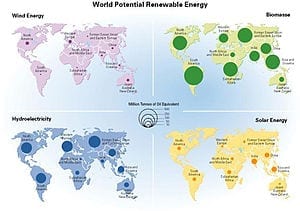Allows for ten times the storage capacity and 300 times the performance
For the past several decades, it has been assumed that in order to store data on a magnetic medium, a magnetic field must be applied. Recently, however, an international team of scientists discovered that heat can be used instead of a magnetic field. Not only is this method reportedly more energy efficient, but it also theoretically allows for ten times the storage capacity and 300 times the performance of current hard drive technology.
Traditionally, hard drives have worked by using a magnetic field to invert the polarity of magnetic domains within the drive platter – the stronger that field, the faster bits of data can be recorded. In the new study, however, it was discovered that those same inversions could be attained by applying ultra-short pulses of heat (in the form of laser light) to a field of densely-packed nanometer-sized magnetic grains. The rate at which this could be done was equivalent to 200 Gigabytes per second.
“Instead of using a magnetic field to record information on a magnetic medium, we harnessed much stronger internal forces and recorded information using only heat,” said physicist Thomas Ostler from the University of York, which led the project. “This revolutionary method allows the recording of Terabytes (thousands of Gigabytes) of information per second, hundreds of times faster than present hard drive technology.
Read more . . .
Bookmark this page for “magnetic recording devices” and check back regularly as these articles update on a very frequent basis. The view is set to “news”. Try clicking on “video” and “2” for more articles.









